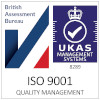Given the environmental and economical significance of sulphide minerals, Adrok Ltd. have been developing ground deployed non-destructive technologies to help pinpoint the location of sulphide metal ores at depth. If you are interested in finding our more, please download this white paper and reach out to us for further details on our capabilities.
Why is it important to find Sulphide minerals?
Sulphide minerals can be considered critical minerals, especially when they contain elements that are essential for modern technology and industry. For example, sulphide minerals often contain nickel, copper, and cobalt, which are critical for batteries, electronics, and renewable energy technologies.
Sulphide minerals can form in various geological settings, each with unique characteristics and processes. The primary settings where sulphide minerals are commonly found are:
1. Volcanogenic Massive Sulphide (VMS) Deposits
• Formation: These deposits form on or near the seafloor in volcanic settings, where hydrothermal fluids rich in metals are expelled from volcanic vents, also known as "black smokers."
• Location: Typically found along mid-ocean ridges, back-arc basins, and ancient volcanic belts.
• Minerals: Commonly contain copper, zinc, lead, gold, and silver
2. Sedimentary Exhalative (SEDEX) Deposits
• Formation: These deposits form from hydrothermal fluids that are expelled into sedimentary basins, precipitating sulphide minerals in a stratiform manner.
• Location: Found in sedimentary basins, often associated with shale and carbonate rocks.
• Minerals: Rich in lead, zinc, and silver
3. Magmatic Sulphide Deposits
• Formation: These deposits form from magmatic processes where sulphide minerals crystallize from a cooling magma.
• Location: Commonly associated with mafic and ultramafic igneous rocks.
• Minerals: Typically contain nickel, copper, and platinum group elements.
4. Hydrothermal Vein Deposits
• Formation: These deposits form from hydrothermal fluids that move through fractures and faults in the Earth's crust, depositing sulphide minerals as they cool.
• Location: Found in a variety of geological settings, including volcanic and sedimentary rocks.
• Minerals: Often contain gold, silver, lead, zinc, and copper
5. Metamorphic Deposits
• Formation: These deposits form from the recrystallization of pre-existing sulphide minerals during metamorphism.
• Location: Found in metamorphic rocks, often associated with regional metamorphic belts.
• Minerals: Can include a variety of sulphide minerals depending on the original composition of the rock
Each of these settings provides unique conditions that influence the types and concentrations of sulphide minerals that form. Understanding these settings helps geologists locate and extract valuable mineral resources... and that's where Adrok Ltd. can help.
Download 8.1-1 Sulphide exploration using Adrok's non-invasive EM technology PDF



